The Saskatchewan Burrowing Owl Interpretive Centre (SBOIC) is one of Moose Jaw’s treasures, housing some of the last of these cute little predators whose numbers in the wild are decreasing at an alarming rate.
“There’s only about 500 to 800 of them left here in Canada, and you’ll find most of them down in the southern area,” said Clarissa Howell, a summer student leading tours at the SBOIC. “Saskatchewan and Alberta mainly. The big thing for these guys is habitat loss, rodenticides, and pesticides.”
Burrowing owls will eat almost anything small enough for them to catch. Their diet in southern Saskatchewan consists mostly of small mammals and insects, such as mice, voles, and grasshoppers.
These are the only owls to nest underground, although they don’t dig their burrows themselves. Burrowing owls rely on gophers, prairie dogs, and badgers as diggers, taking over abandoned burrows to shelter and raise their young. As gopher, prairie dog, and badger numbers decline — in the US, 99 per cent of prairie dogs have been exterminated — the owls have fewer places to live.
They are also not the top predators in their food chain — their size and burrow-dwelling lifestyle make them vulnerable to badgers, foxes, hawks, and larger owls. Burrowing owls stand about 23 cm tall (9.5 inches) and weigh only 150 grams — just more than a baseball, but less than a hockey puck.
So, who are the owls of the SBOIC? They are divided between “wild” owls, who aren’t used to close human contact, and “imprinted” owls, who were hand-raised to be comfortable with people.
A group of owls is called a parliament.
Cricket – imprinted, hatched July 2013
Cricket is the main ambassador owl for the SBOIC. He was hand-raised by SBOIC director Lori Johnson, and sees her as his mama. He’s getting to be an elderly owl now at 9 years old, so Roo is preparing to step into his shoes.
Considering how many people have met and fallen in love with Cricket over the years, Roo has big shoes to fill. Luckily, she is completely adorable.
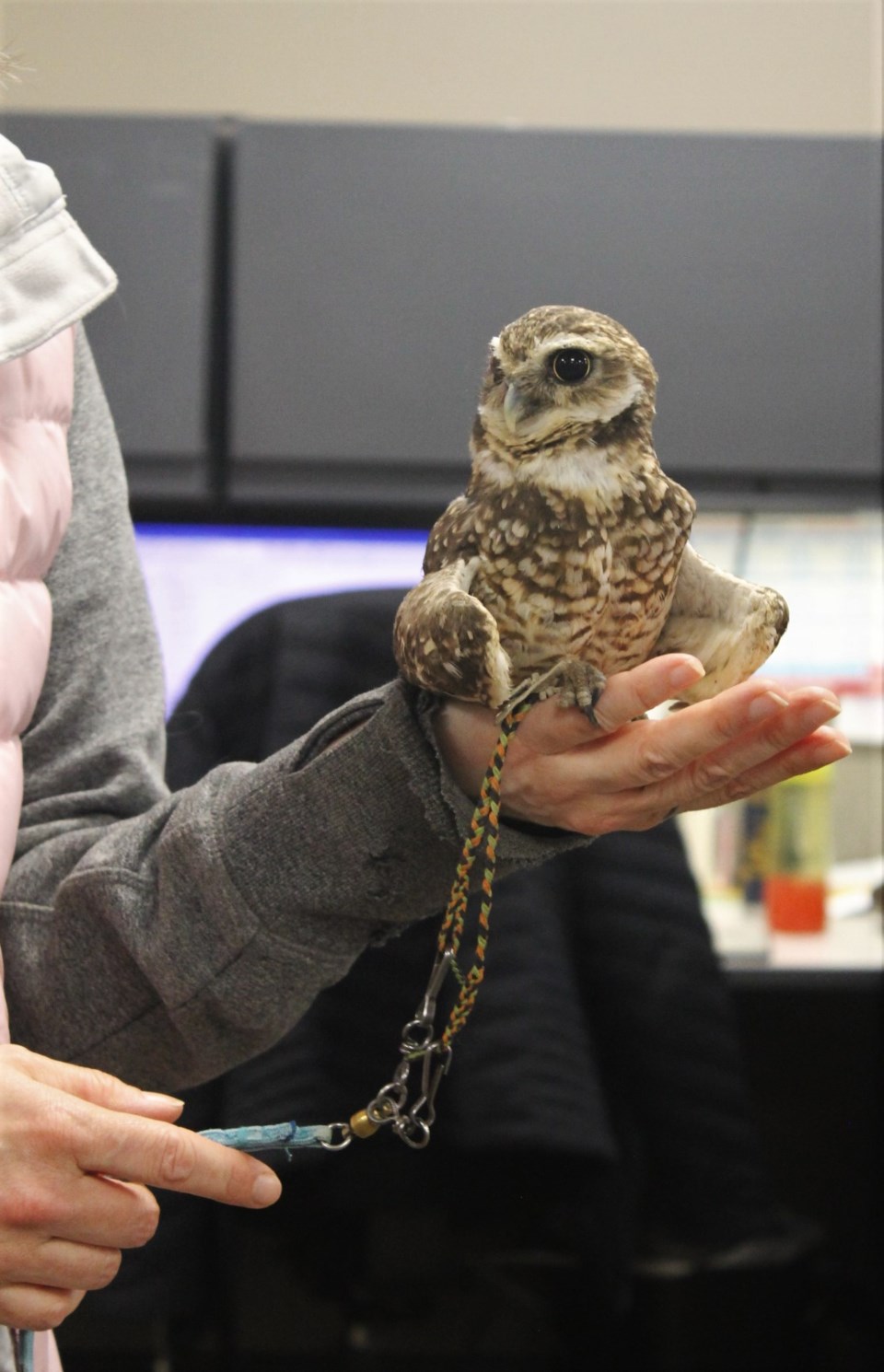
Peanut – imprinted, hatched February 2016
Peanut hatched unexpectedly in the winter of 2016. He imprinted onto Johnson as well, making him perfect as an ambassador owl. Johnson describes him as friendly, outgoing, and funny.
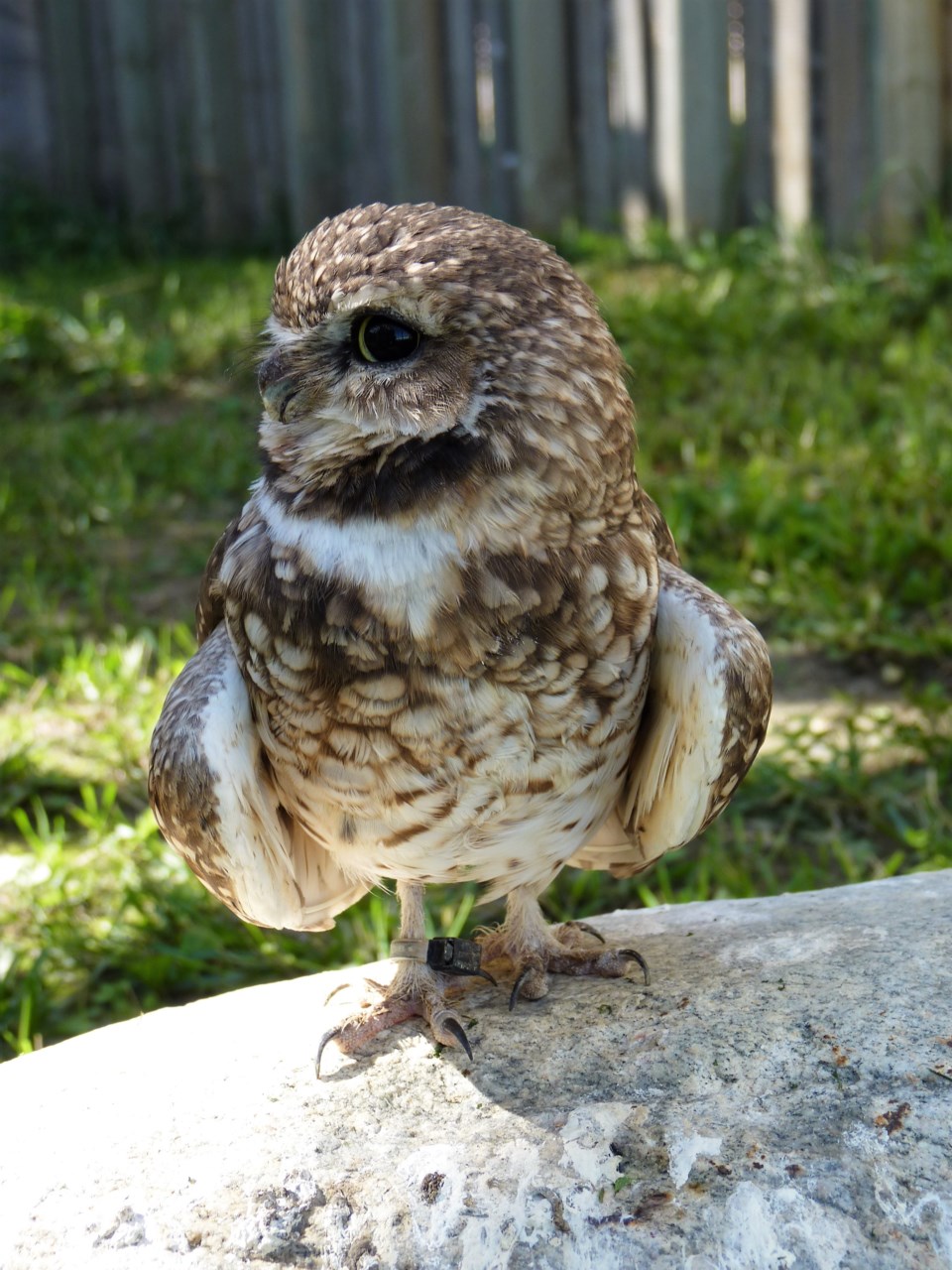
Thea – wild, hatched July 2013
Thea isn’t a very social animal, but she sticks up for herself against the other burrowing owls. Thea is Peanut’s mum, and proud of it.
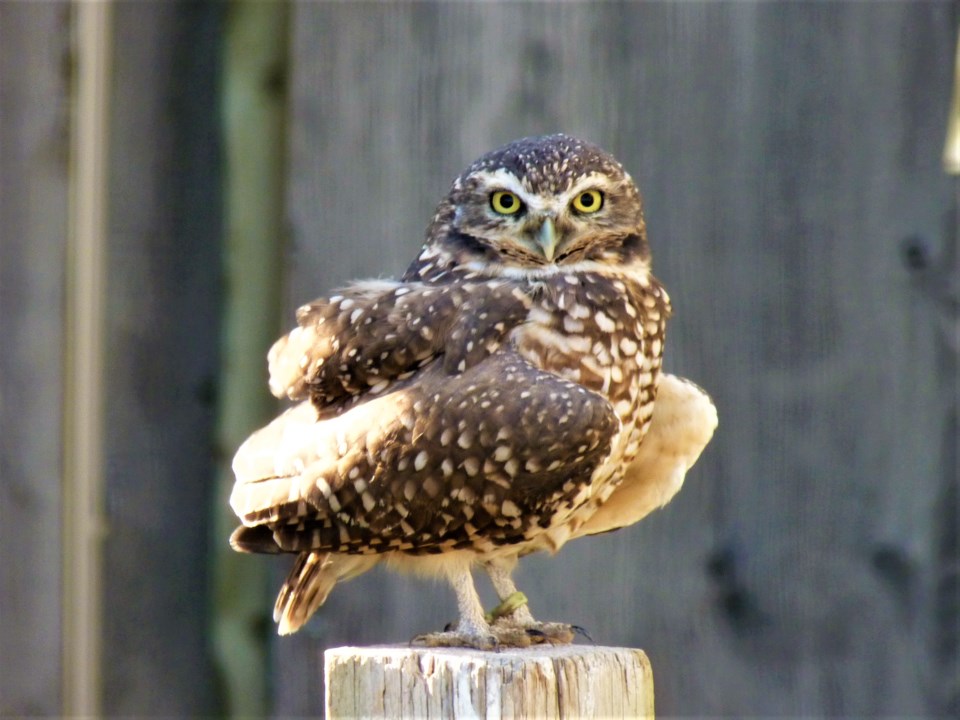
Pilot – imprinted, arrived September 2018
Pilot hails from the Burrowing Owl Conservation Society of B.C., where he was hand-raised as an ambassador owl. He fits right in with his new flock and is looking forward to more ambassador work in Moose Jaw.
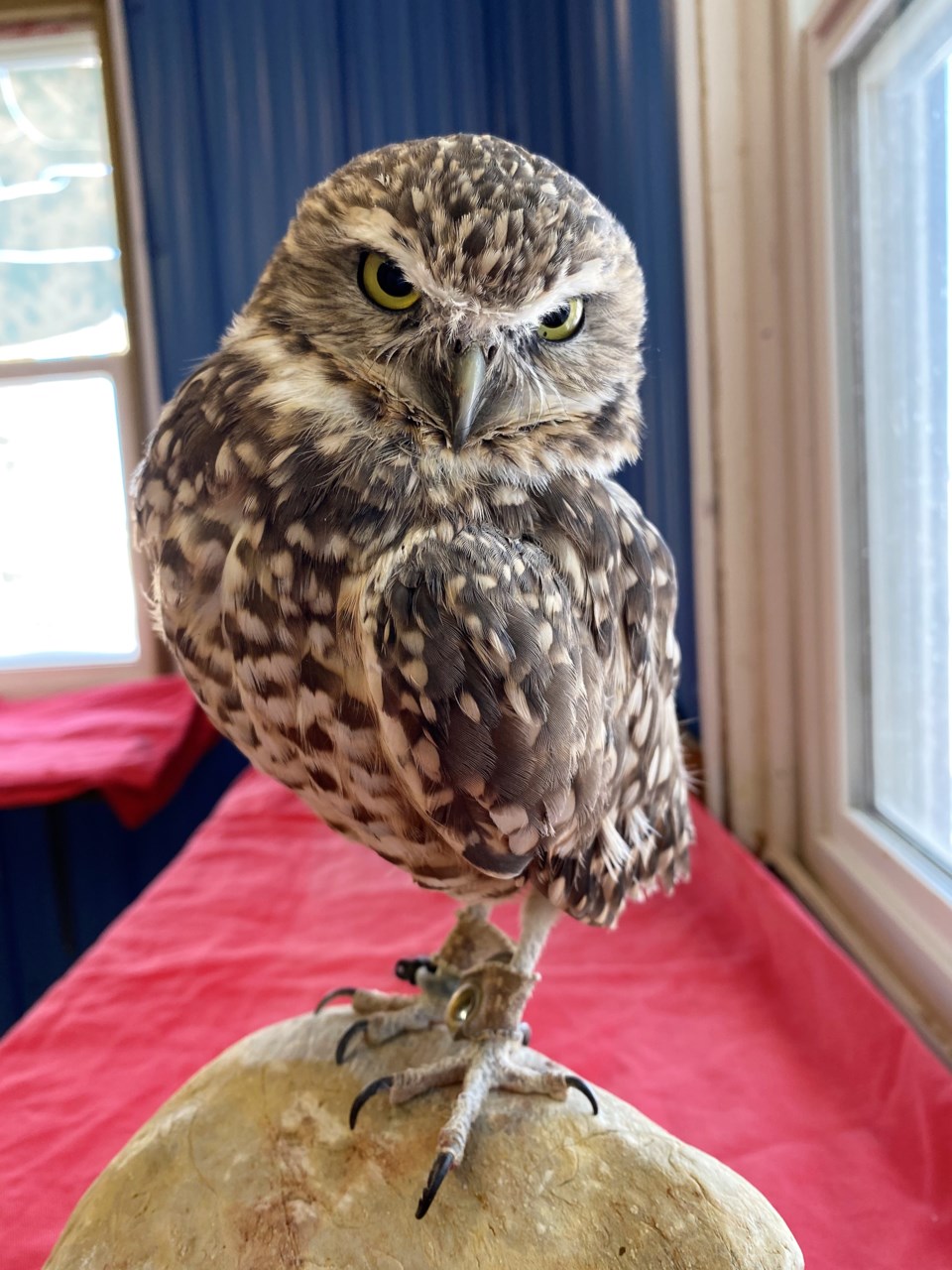
Chip – wild, hatched May 2014
Chip was born at the SBOIC and is a permanent member of the flock. He is the father of Ellie and Lily.
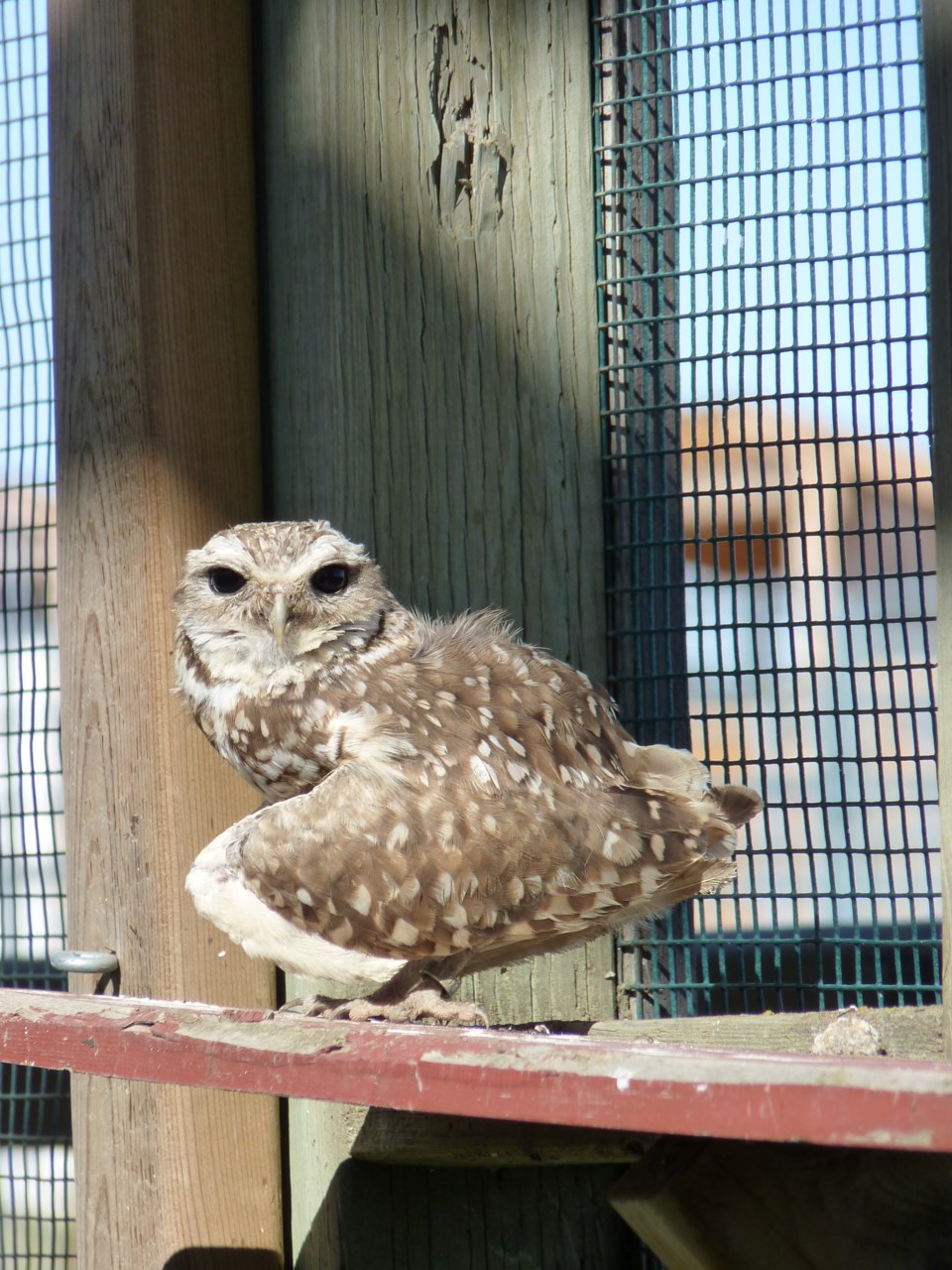
Ellie and Lily – wild, hatched June 2019
These sisters are very close. Shy at first, they’ve become outgoing over time. Both have now raised broods at the shelter. Their owlets now live in Manitoba, where they support the burrowing owl recovery program there.
Artemis – wild, arrived September 2015
This poor girl lost the full use of her left wing after an injury in Grasslands National Park. Park wardens relocated her to the SBOIC to live out the rest of her days in safety and comfort.
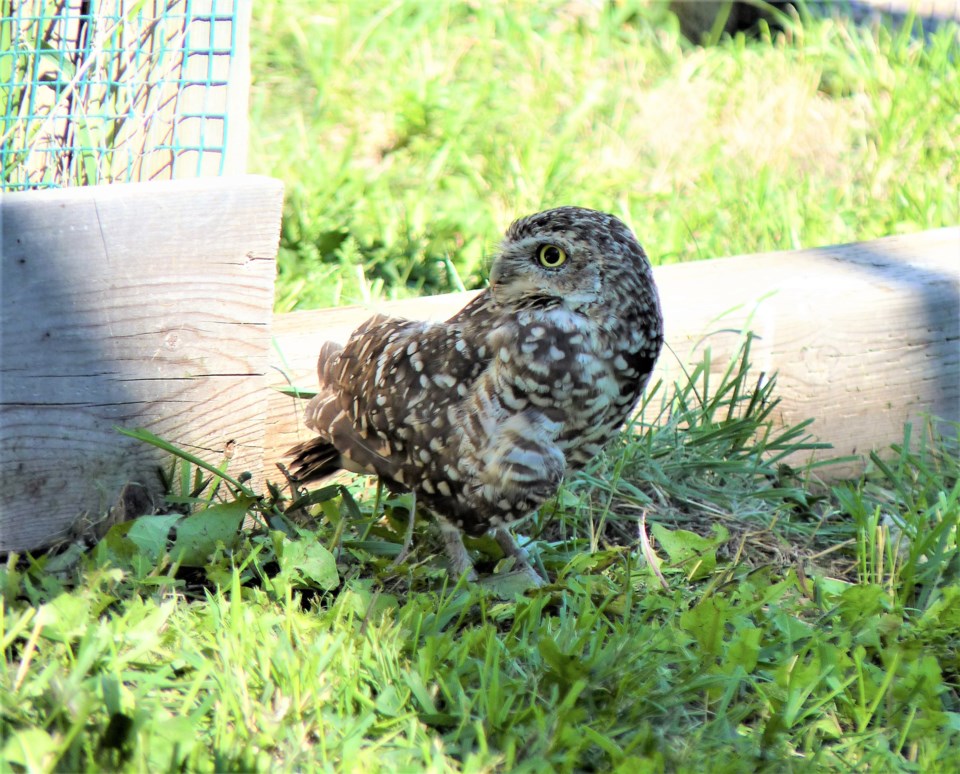
Chase and Marshall – wild, arrived August 2021
Named by a staff member’s son, Chase and Marshall were hatched by the Manitoba Burrowing Owl Recovery Program and are now members of the SBOIC parliament.
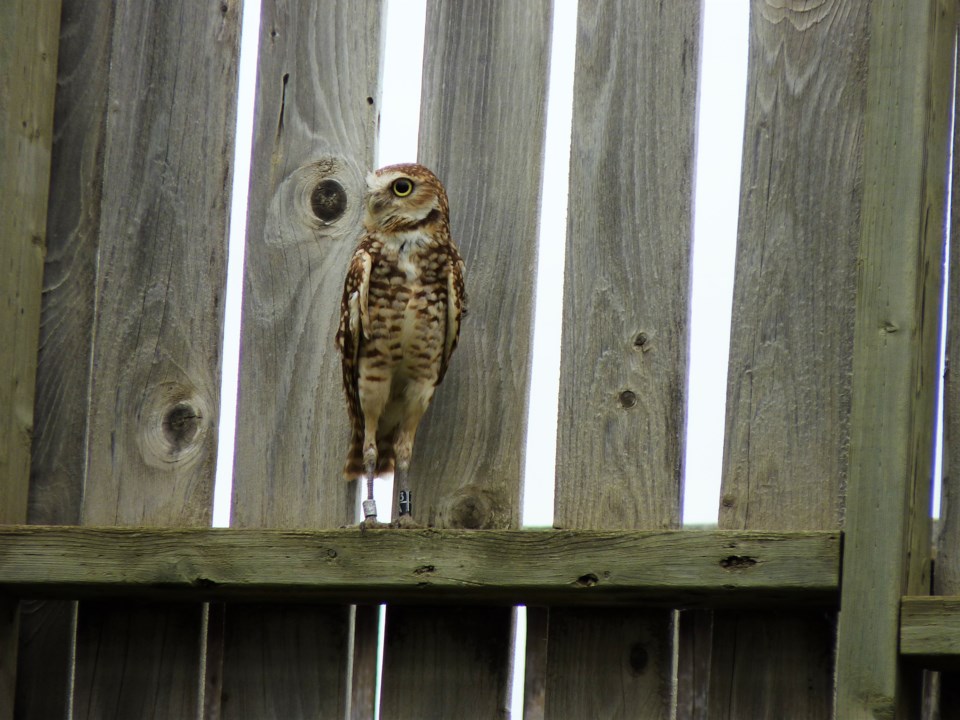
Roo – imprinted, hatched June 2022
There are five babies at the SBOIC right now. Four of them are currently unnamed, which means a naming contest is coming up! Stay tuned for details on that — the SBOIC will be holding the contest soon, and Moose Jaw kids will be able to submit their ideas!
Roo, though, is in the office with Johnson and Howell. She is imprinted on Johnson and is being trained as the SBOIC’s next star ambassador. She is still a baby, a bit naughty and prone to finding trouble, but someday soon she’ll have to tackle the serious job of raising community awareness of the danger her species is in.
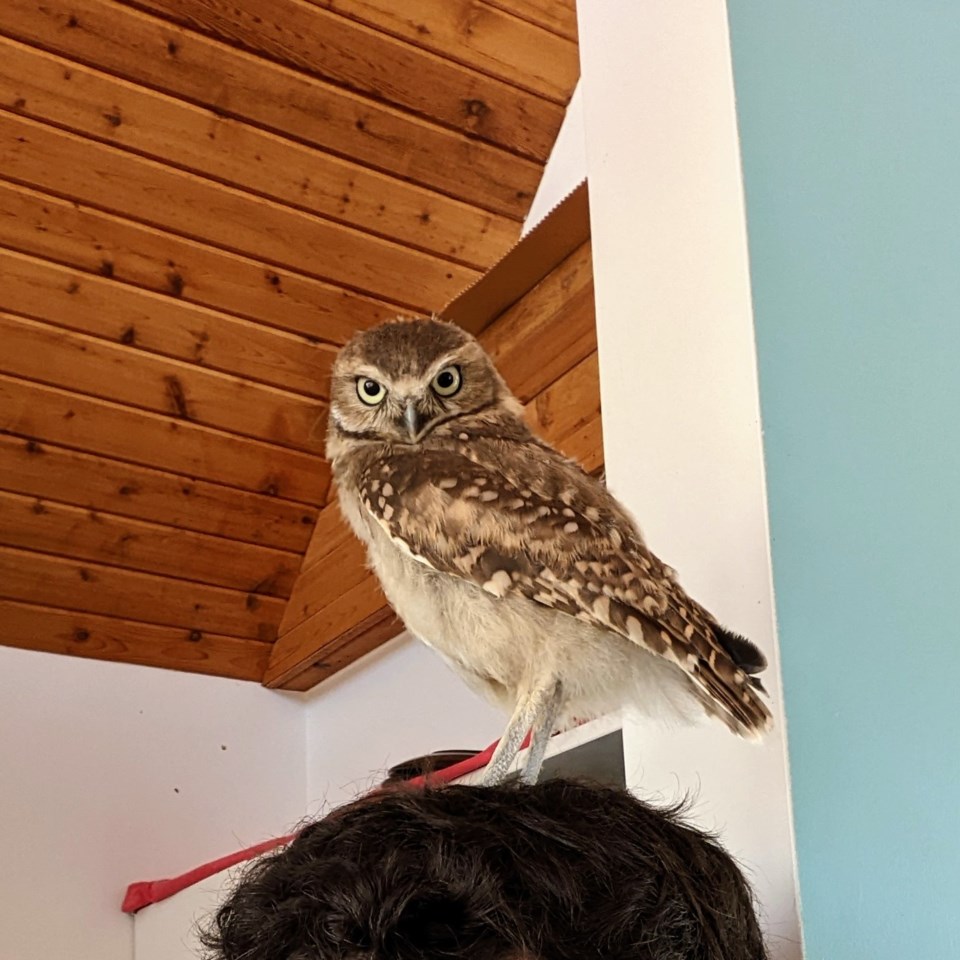
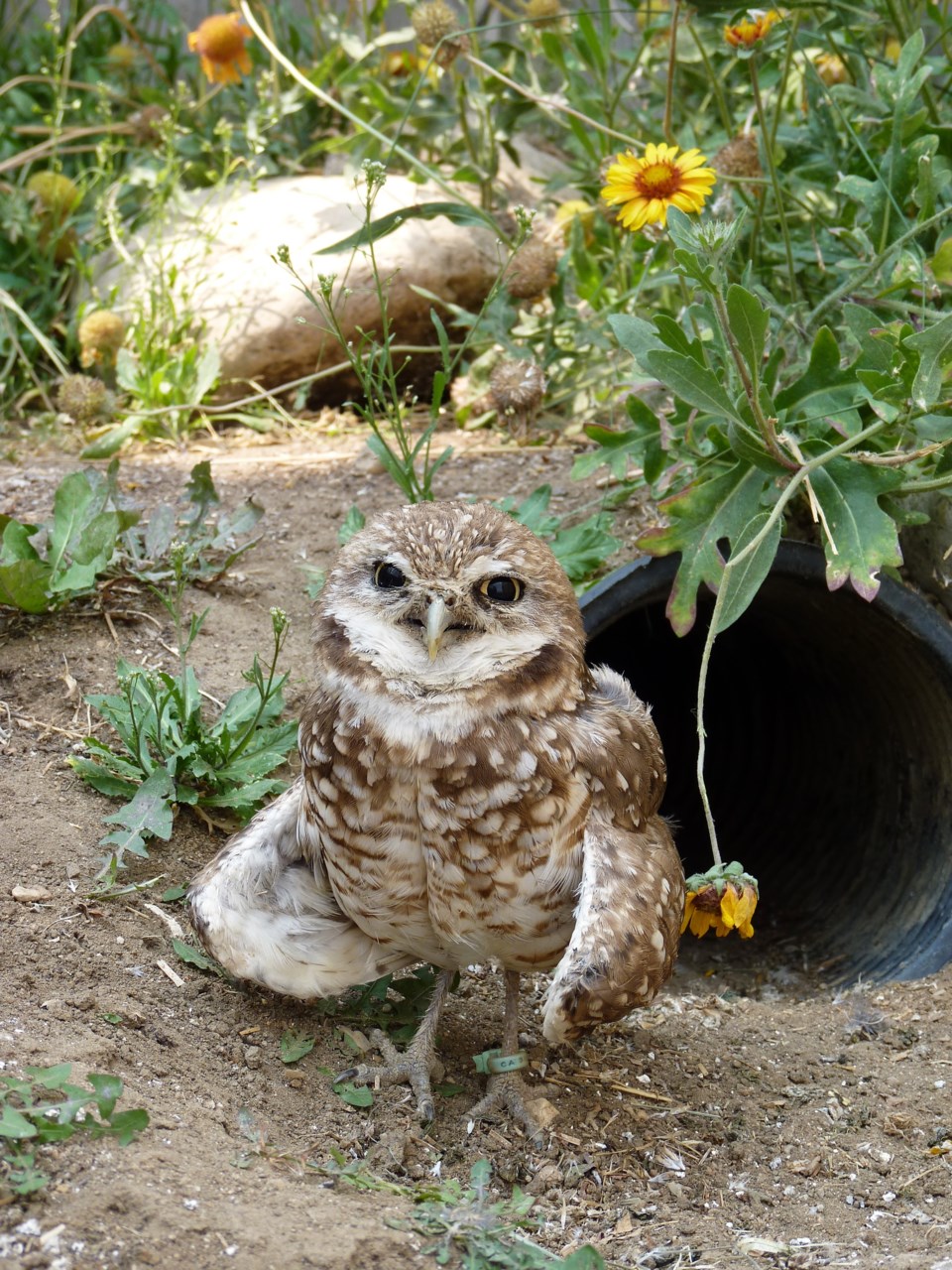

.png;w=120;h=119;mode=crop)

